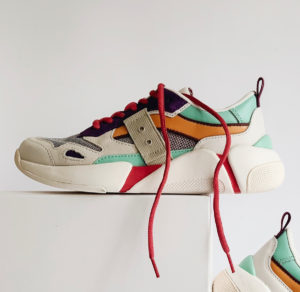The history of hemp is, essentially, the history of civilization. It’s one of the oldest agricultural crops, and has been used to make a dizzying array of useful products for thousands of years.
Many of us are familiar with the most common products made from hemp — rope, paper products, cloth. But there’s a whole wild world of new products that today’s innovators make with hemp, from beer to batteries.
OK, So What Is Hemp, Exactly?
Hemp is the plant also known as cannabis sativa. It has high concentrations of cannabidiol, or CBD, and it can be used for everything from food to clothing to building materials.
It’s also an incredibly renewable resource. It grows as fast as bamboo, and it’s cultivated the world over. It’s so versatile that Popular Mechanics magazine declared in 1938 that hemp “can be used to produce more than 25,000 products, ranging from dynamite to cellophane.”
What Are Some Surprising Hemp Products?
Beer
You read that right. Hemp brews have become a hot commodity among beer lovers in recent years, and they’re available in nearly every style, including IPAs, ales, and lagers.
Hemp beers aren’t brewed with hemp. Instead, the beer is infused with hemp hearts (seeds without the shells) or oil. It’s added after the boiling stage and then sits for several weeks as the yeast ferments and the hemp infuses.
Craft brewers have really embraced hemp, with a number of big names in the industry producing some highly rated brews.
Guitars
Acoustic guitars, electric guitars, basses … even ukuleles and guitar amplifier cabinets can be made from hemp fiber.
Many of the most sought-after tonewoods for making guitars are horribly unsustainable and are growing more and more rare. Hemp provides an amazingly renewable material that luthiers have crafted into instruments with remarkable volume and tone.
Whether they use “hempwood” made of hemp stems or plywood-like composites made of hemp fiberboard, there’s a host of material options to create the ultimate hemp axe.
Shoes
 We’re not just talking about woven slippers here. Some of the biggest names in shoes have ventured into the hemp game with sneakers, sandals, loafers, and casual slip-ons.
We’re not just talking about woven slippers here. Some of the biggest names in shoes have ventured into the hemp game with sneakers, sandals, loafers, and casual slip-ons.
Hemp’s renewable nature makes it a coveted fiber in the fashion industry, which is under increasing pressure to shrink its carbon footprint and make its supply chains more sustainable.
Plus, hemp textiles and bioplastics can even be used in the soles of these shoes, lessening their impact on the environment.
Plastics
When it comes to lessening harmful impact on the environment, hemp-based plastic is one of the most exciting, relatively young products on the market.
As citizens of the 21st century, we have a complicated relationship with plastic. We know that both its production and disposal are terrible for the environment, and yet we rely on it for so much, from preserving food to integral parts in our cars and appliances.
Bioplastics, made from hemp, are biodegradable and have the potential to reduce carbon emissions dramatically. They have a higher tensile strength than the polypropylene commonly used in products like drink containers and car dashboards. In addition to being biodegradable and renewable, hemp plastic is stronger and lighter than traditional plastic.
Fuel
While you won’t find it (just yet) in the pump at your corner station, hemp can actually be used to make ethanol, methanol, and biodiesel fuels.
Hemp biodiesel is made from hemp seed oil and other natural ingredients, and can run in any conventional diesel engine. It’s also less toxic than table salt and far safer to handle than conventional diesel fuel.
Hemp ethanol is made from fermented hemp stalk and other grains, starches and sugars, while methanol is made from pulp.
We don’t yet have the kind of infrastructure or technology to reliably produce viable hemp biofuels on a mass scale. But, even though we’re not at a point where hemp fuels could reliably replace fossil fuels, they can certainly lessen our dependence on them.
Batteries
 Hemp-based supercapacitors have the potential to change the way we look at batteries. A supercapacitor isn’t technically a battery, but it’s a type of energy storage that’s similar, except that it charges faster and lasts longer than a traditional battery.
Hemp-based supercapacitors have the potential to change the way we look at batteries. A supercapacitor isn’t technically a battery, but it’s a type of energy storage that’s similar, except that it charges faster and lasts longer than a traditional battery.
Supercapacitors are typically made with graphene, which is an atomically thin and very strong, very conductive carbon material.
In 2014, scientists found that hemp can actually be used to make faster, cheaper supercapacitors that perform up to 200% better than graphene ones.
Although this technology is still relatively new, it’s already being used to power devices like electric motorcycles.
Houses
Heard of hempcrete? It’s a masonry composite made of hemp hurd — the inner core fibers of the plant’s stalk. It’s mold-resistant, non-toxic, and termites hate it.
Oh, and it’s recyclable.
Although hempcrete has been used in home building across Europe for decades, one of the first hemp houses in the U.S. was completed in 2019.
The Push House in Asheville, North Carolina, has been grabbing headlines, and not just for the novelty of being built with hemp. The house is eco-friendly in a host of ways, and hempcrete’s most notable contribution is its nearly carbon neutral footprint. The hemp and lime in the compound actually captures carbon dioxide.
So Much More …
While these are some of the more attention-grabbing hemp innovations, it’s useful to note that hemp is used in nearly every product you can imagine, from soap to sheets and even milk.
With so much versatility and such a long history of use, it’s surprising that hemp products can still seem so novel. Even though it has been a staple crop the world over for thousands of years, the outlawing of hemp cultivation in many countries through much of the 20th century almost erased this rich history.
Today, as cannabis is once again widely grown for CBD and industrial hemp production, we’re entering a renaissance of hemp products and a gold rush of innovation.
With its incredible sustainability and vast applications in food, industry, and so much more, it truly is a miracle plant.

